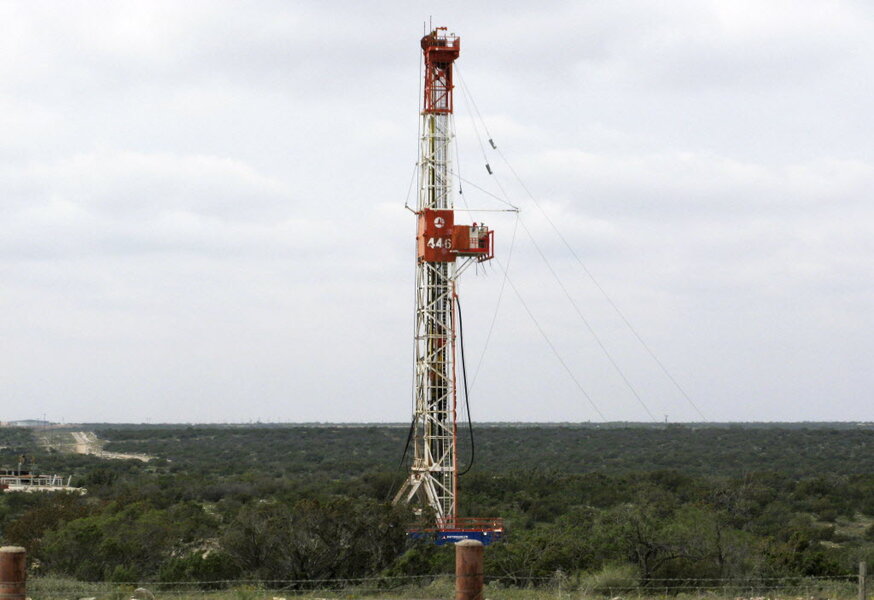How satellites are helping decode human-caused earthquakes
Loading...
An international team of researchers recently determined that the 4.8 magnitude earthquake that shook Timpson, Texas in 2012, the largest earthquake ever measured in the state, was caused by fracking and the subsequent wastewater injection process.
Using satellite data from the Japanese Advanced Land Observing Satellite (ALOS), the research team observed changes in the height of the ground above several fracking wastewater wells. The study, which was published Thursday in Science, may also hold the key to predicting future man-made earthquakes, by monitoring how the earth responds to pressure.
“Our research is the first to provide an answer to the questions of why some wastewater injection causes earthquakes, where it starts, and why it stops,” study co-author William Ellsworth, a geophysics professor at Stanford’s School of Earth, Energy & Environmental Sciences, said in a press release.
While fracking, water is pumped through the subsurface, where it mixes with the gas or oil. Once the fuel source is separated out, the resulting wastewater is too contaminated to be purified into drinking water, so it is inserted into the ground, a process that can increase pressure under the earth’s surface and cause earthquakes in areas far from tectonic plate boundaries.
As Anna Kuchment reported for NPR:
Until 2008 not a single earthquake had ever been recorded by the U.S. Geological Survey from the Dallas–Fort Worth area.... Since then, close to 200 have shaken the cities and their immediate suburbs. Statewide, Texas is experiencing a sixfold increase in earthquakes over historic levels. Oklahoma has seen a 160-fold spike in quakes, some of which have sent people to hospitals and damaged buildings and highways. In 2014 the state’s earthquake rate surpassed California’s.
Interestingly, the earthquake didn’t occur beneath the wastewater wells where the ground movement was observed. It happened 15 miles away, near two different wells where the wastewater was injected much deeper into the earth. Rather than pushing the earth upward, the deep wells increased both the underground pressure and the lubrication within the rocks, ultimately causing the 2012 earthquake along an ancient fault line, said Dr. Ellsworth.
Justin Rubinstein, a geophysicist at the USGS who was not involved in this study, told Scientific American that the absence of ground rise may actually indicate higher pressure underground. Therefore, the satellite technology may actually be more useful in looking for wastewater wells above which the earth is not rising, as an indicator of human-caused earthquakes in the making.
Their findings highlight the importance of understanding local geology before starting wastewater injection, say the researchers. “The recent upturn in seismicity in Oklahoma and Kansas commonly happens where injection occurs close to the crystalline basement, so we’re getting lots of earthquakes in those places,” Ellsworth said.
“Injecting at shallower depth above a blocking formation would reduce the ability of the pore pressures to migrate to the basement and activate the faults,” he added. In other words, keeping the water in shallow wells, above a thick layer of impermeable rock, allows the pressure to gently bow the surface upward and may keep it from causing an earthquake.
Through further analysis, the research team hopes that their data will help explain why earthquakes occur at some well injection site but not others. More data is key, both from satellites and regular reports on the volume of water injected into the earth.
“States need to do a much better job of gathering the data and making it available to the public so these sorts of studies are possible,” Mark McClure, an adjunct professor for energy resources engineering at Stanford University, told Scientific American. “Specifically, monthly injection volumes for every well.”








